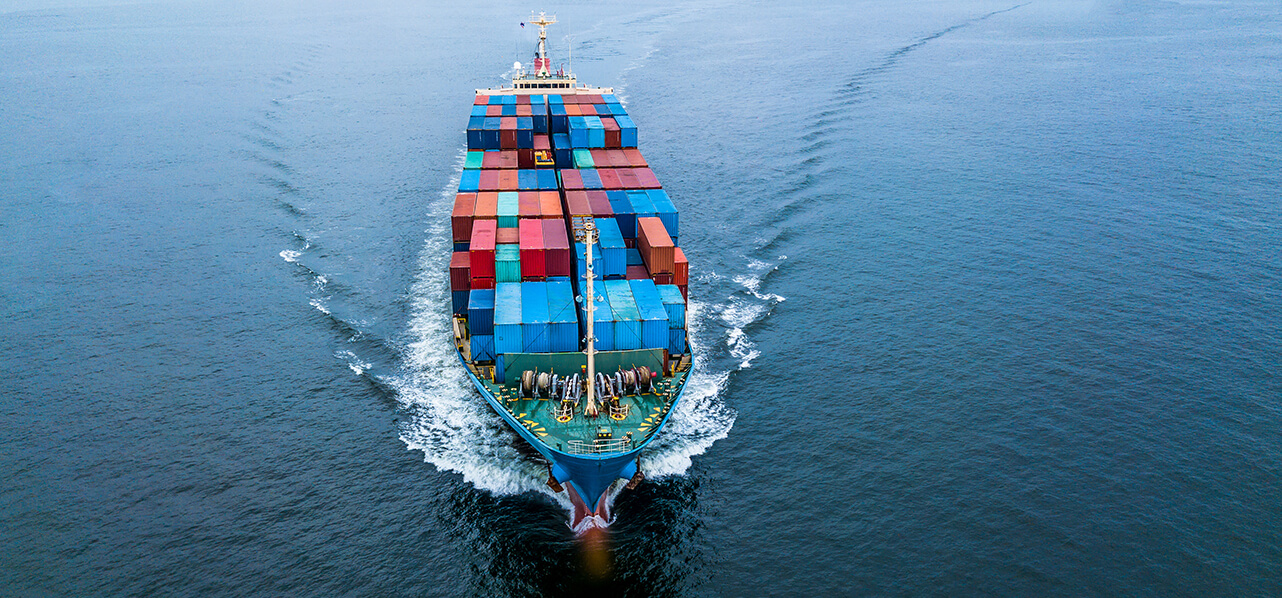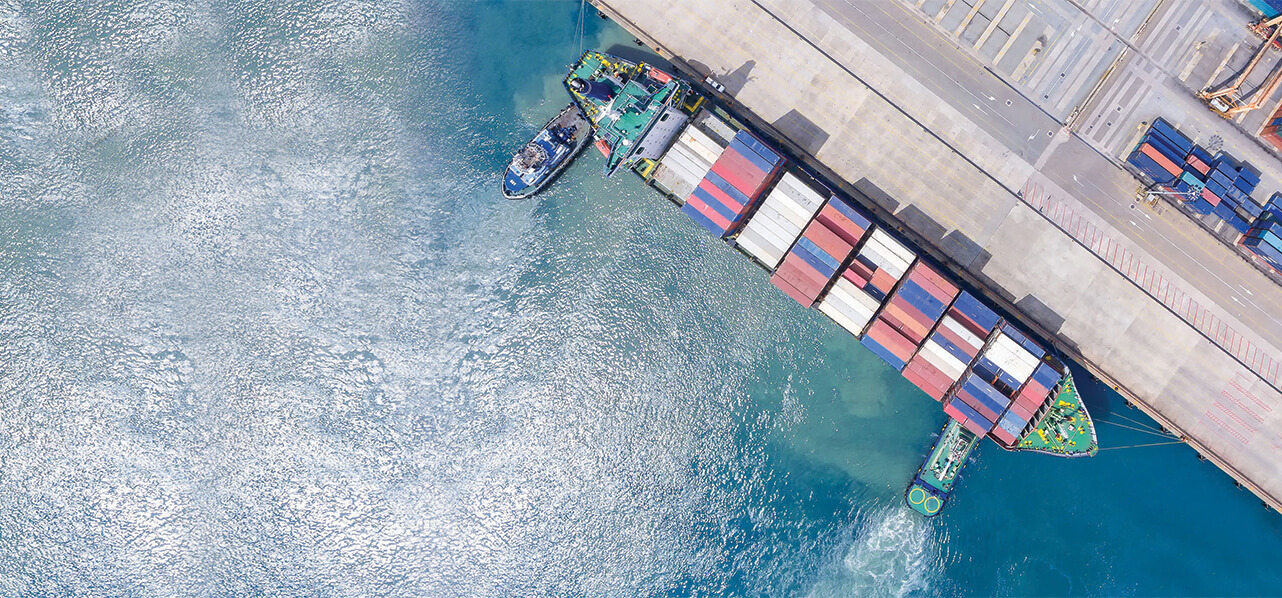Partner London
"The Strait holds geographical importance as one of the world’s most important choke points."
INTRODUCTION
The increase in geopolitical tensions in the Middle East recently resulted in Iran threatening to close the strategically vital Strait of Hormuz (the “Strait”) to international shipping. Inevitably, this led to considerable concern over the impact that the closure of the Strait (or attacks on vessels passing through the Strait) would have on the flow of goods and energy products, as well as the potential disruption to international markets that would drive up prices.
The Strait holds geographical importance as one of the world’s most important choke points. Placed between the Gulf of Oman and the Persian Gulf, it provides the primary route for the transport of energy products from the Middle East. It is the only sea passage from the Persian Gulf to the open ocean and is just 22 nm (41 km) wide at its narrowest point.
In 2024, just over twenty million barrels per day of petroleum liquids (crude oil, condensate and petroleum products) flowed through the Strait according to the US Energy Information Administration. This amounted to about 20% of global consumption. Over 80% of the crude oil, condensate and LNG transported through the Strait of Hormuz is consumed in Asian markets —specifically China, India, Japan and South Korea.¹
At the peak of the recent tensions, it was reported that some vessels are being asked to wait outside the Persian Gulf and Strait until closer to their load date.² This could have led to issues of delay owing to congestion. Vessels may also have been forced to deviate.
At the time of this publication, traffic is moving through the Strait. However, ship owners continue to exercise caution and rightly so as the situation remains fluid. In this series of articles from our global maritime disputes team, we will discuss the potential legal implications for the shipping industry if parties attempt to avoid passing through the Strait or if it does close completely.
CONTRACTUAL QUESTIONS
Crises on a global scale often lead to parties looking to escape their contractual obligations. The practical implications of these ongoing geopolitical tensions are that parties may seek to renegotiate contractual terms or failing such renegotiation, attempt to avoid complying with their contractual obligations or bring claims for breach of contract. The situation is particularly acute for the shipping industry given its greater vulnerability to global turmoil, coupled with the longer-term nature of contractual arrangements such as charterparties that expose parties to significant risks that compliance with such obligations may be prevented by supervening events.
Parties under English law are generally free to enter contracts on such terms as they may agree (within certain limits). As such, whether a party can exercise the options of contractual termination or alternative performance and what rights and obligations they have will very much depend on the contractual terms entered into and the particular facts at the time.
"Generally, a carrier must call at ports as described in the contract of carriage by the usual or customary route and with reasonable despatch."
Deviation
Generally, a carrier must call at ports as described in the contract of carriage by the usual or customary route and with reasonable despatch. The terms of the charterparty will specify whether deviation is allowed and the extent of the liberties granted.
Certain deviations from an agreed voyage route are permitted under Article IV, Rule 4 of the Hague-Visby Rules, most notably for the purposes of saving lives or property at sea. In addition to this, contracts of carriage may contain express liberty clauses providing for deviations that are reasonable and proportionate to a given threat. There is also an implied right for the Master to deviate to avoid danger to the ship or cargo. Any deviations falling outside of what is allowed may then result in a contractual breach.
In determining whether a deviation is reasonable, it is necessary to consider the specific circumstances in which the deviation occurred, including the threat posed to the specific vessel, taking into account its flag and cargo. Lastly, any liberty clause in a charterparty may not necessarily be incorporated into the relevant bill of lading and may not be binding on cargo interests.
War Risks Clauses
Prevalent war risk clauses, such as CONWARTIME and VOYWAR, are commonly included in charterparties to provide for alternative methods of performance in the event of war, or upon the occurrence of events akin to war and hostilities which do not render the continued performance of the charterparty impossible. In both CONWARTIME and VOYWAR, war risks are stated to include acts of war, hostilities, malicious damage, rebellion, acts of terrorists and blockades, amongst other perils. Such clauses provide owners with the right to refuse to proceed with a particular voyage where it appears that the vessel, her crew or cargo in the reasonable judgement of the master or her owners may be exposed to war risks.
Generally speaking, if a vessel is being ordered to proceed to a war risk area, the war risks clause may provide that the owner has the right to refuse the order if it is reasonable to do so. This will involve some form of assessment of the likelihood of the vessel’s exposure to such risks. Such risk assessment will likely involve enquiries to assess the degree of exposure (including independent voyage risk assessment, liaising with flag state representatives and P&I clubs etc). It is evident from case law, that the owners’ decision to refuse the order must be based on objective evidence and a real likelihood of danger (see The Triton Lark [2012] EWHC 70 (Comm)).
War risk clauses may also not affect the off-hire or other clauses agreed between the parties and again it would be a question of looking at the specific terms which have been agreed between the parties.
Key contacts
"The war risks clause may provide that the owner has the right to refuse the order if it is reasonable to do so."
Blockades
The current situation in and around the Strait could be described from a layperson’s perspective as a “blockade” (or rather, at present, risk of one), given the restriction and possible prevention of movement of ships through it. However, it is important for parties to understand what a “blockade” is from a legal perspective – particularly given that charterparties, contracts of insurance and so forth may include such a term, which parties could look to rely upon under certain circumstances.
In VOYWAR 1950, “War Risks” is defined as including, “any blockade or any action which is announced as a blockade by any Government or by any belligerent or by any organized body”. Further, a blockade prevents access by force and must be both “effectual and (save accidental interruption by weather) constantly enforced” (as decided in The Juffrow Maria Schroeder (1801) 3 C. Rob. at. P.156 and The Helen (1865) 1 A&E 1) .
The reference to governments, belligerents and organised bodies in war risk clauses seems to focus on whether the body in question has the effective power to cause a vessel to be accosted on her voyage.
Based on the information currently available in respect of Iran and its government, it would appear that the first limb has been satisfied. What, however, is an “effective blockade”? This brings us to the question of how Iran might achieve the threatened closure of the Strait. The situation remains uncertain and will be fact specific. Although indications were that this was going to be achieved primarily through mining, it could also have been attempted through the deployment of surface-to-surface missile batteries, aircraft with an anti-surface warfare capability, submarines, fast attack craft or a combination of any of them. A blockade may be effective, if the Strait is closed by way of any of the methods detailed above (i.e. mines, missiles, submarines etc), such that attempting to pass through the blockade would be dangerous.
The case law also raises interesting questions as to what would constitute a blockade in other circumstances. For example, if there is an announcement of a blockade, but this is not accompanied by action amounting to effectual and constant enforcement, can the blockade be created by the announcement itself or does there need to be a reasonable possibility of some use of force and a measure of publicity? There has been some discussion as to whether a blockade must be enforced against all vessels alike or whether a blockade can be effective if enforced against specific vessels (i.e. of a particular flag or carrying a particular cargo). The case law indicates that the focus should be on the specific chartered vessel and whether the event relied upon “would in any way affect the risk of a vessel being accosted on her voyage” (The Marilu [1956] 2 Lloyd’s Rep 97).
Hostilities or Malicious Damage
Whilst a blockade of the Strait may be the most conceivable threat given the recent developments in Iran, there is also a real risk that Iran adopts a strategy which involves targeting or seizing specific vessels linked to Israel or its allies. There have been a number of examples in recent years of attacks on key shipping lanes being used to apply pressure amid ongoing conflict, including, most notably, the recent Houthi attacks in the Red Sea. Such attacks would be likely to fall within the scope of “hostilities”, “malicious damage” or “warlike operations” which would in the same way as a ‘blockade’ enable owners to refuse charterers’ orders under the commonly used war risk clauses, CONWARTIME and VOYWAR.
The Houthi attacks in the Red Sea, or any similar attacks on commercial shipping arising in the Hormuz Strait, may fall within the definition of “malicious damage” which is widely accepted to cover situations where a person or organisation has acted in a way which involved an element of spite or ill-will in relation to the property insured, meaning the damage must simply have been inflicted intentionally (The B Atlantic (No 2) [2014] EWHC 4133 (Comm)).
Notably, there have historically been attacks on commercial vessels transiting the Strait of Hormuz, including four ships attacked off the coast of Fujairah (UAE) and two oil tankers attacked in the Gulf of Oman in 2019.
As set out above, for owners to rely upon a war risks clause to refuse an order, they must be able to show that the hostility, warlike operations or malicious damage, may be or may become dangerous in their reasonable judgement. Whilst the current situation in the Strait is unlikely to pose a sufficiently significant threat to fall within the war risks clause, should the situation develop in such a way that vessels become subject to attacks in the Strait, such as those currently facing vessels transiting the Red Sea, it may be the case that owners are entitled to refuse orders under a war risks provision. As mentioned above, owners will be required to demonstrate that it is reasonable to consider there to be a danger to the vessel and it will be necessary to take into consideration the proportion of vessels subject to attacks when transiting the Strait, the predictability of the attacks and potentially the type of vessel, if relevant to the danger posed, for instance the Houthi attacks have predominantly targeted oil tankers.
"Owners can refuse to comply with time charterers' orders to proceed to an unsafe port and may ask for alternative voyage instructions."
Safe Ports
Arguments about the safety of ports requiring transit through the Strait could also arise. Owners can refuse to comply with time charterers’ orders to proceed to an unsafe port and may ask for alternative voyage instructions. If time charterers continue to insist in their order for a vessel to proceed to an “unsafe port”, they risk being in repudiatory breach of contract, which potentially the owners could accept and bring the time charter to an end or claim damages.
Various ancillary issues may also arise in these circumstances, for example, as to whether war risks clauses will result in exclusion of the charterer’s safe port warranty or whether war risks cover incorporates detention or diversion expenses, as well as any additional crew or insurance costs.
The threatened or actual closure of the Strait also raises several other legal issues including whether the charterparty or other relevant contract would be frustrated, whether there are force majeure provisions that would be applicable in this situation and also the implications for insurance cover on the vessel and cargo. We will discuss each of these topics in subsequent articles that will be published shortly.
CONCLUSION
Commercially prepared contracts often make provision for changes in circumstances and the allocation of responsibility and risk in those situations. The key question is often around which clauses will apply and where the Strait is concerned, whether it is war, blockade or something else? Whether a party can be excused from or adapt its performance under a charter will depend on the terms of the charter itself, applied in relation to the facts giving rise to the non-performance. The situation in the Strait remains in a state of flux. In light of this, owners and charterers with vessels trading in the Gulf region or through the Strait may want to take the opportunity to review their contractual rights and obligations to consider how its closure may impact on these and how such impact can be minimised. Likewise for owners and charterers trading in the Red Sea, given the recent vessel sinkings. Even if commercial negotiation is what achieves the best resolution, it will be more effective where parties understand the contractual landscape.
We will be publishing further articles dealing with other issues arising out of the current situation.
[1] https://www.eia.gov/todayinenergy/detail.php?id=65504
[2] https://www.tradewindsnews.com/tankers/vlccs-swerve-strait-of-hormuz-as-tanker-traffic-plummets/2-1-1836547
Click here to view the full article series.
Key contacts
Partner London
Partner Dubai
Counsel London
Associate London







